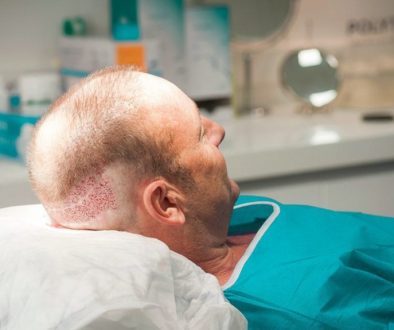Loss of Natural Hair after a Hair Transplant (Shockloss)
Help! I’ve heard it is normal for the grafts to shed 2-4 weeks after hair transplantation surgery, but I am losing my natural hair as well. Why is this happening?
An unfortunate possibility in hair transplantation is a phenomenon known as shock loss. This is mostly a temporary condition where native hairs are “shocked” due to trauma of the scalp during hair transplantation surgery, creating an additional but mostly temporary hair loss condition. Though nobody likes to experience this, fortunately, this is normal.
Shockloss can occur both in the donor and recipient area a few weeks to a few months after having hair transplantation surgery. There are two forms of shockloss, temporary and permanent.
Permanent shockloss, though rare, can occur in one of two ways:
- The physician transects existing hair follicles (the risk is significantly lessened in the hands of a skilled physician; however, it is risky if you are in the hands of a clinic using older technology, using larger instruments to make incisions and inserting plugs, mini-grafts, or micro-grafts).
- It can occur to hairs that have entered the miniaturization process…but these hairs would have fallen out eventually anyway. This is why getting on medication such as Propecia (Finasteride) is very important, to hopefully strengthen existing hairs and turn miniaturized hairs back into healthy hairs.
Temporary shockloss is more common and seemingly unpredictable – varying from person to person. In other words, there is no pattern or understood reason why some patients experience it drastically and others do not. Temporary shockloss occurs due to scalp trauma from surgery. But within several months, the hair grows back.
There are ways, however that temporary OR permanent shockloss can be minimized.
- Using ultra refined follicular unit transplantation, the recipient incisions are much smaller and refined, using custom cut blades as small as .6 mm which causes less trauma to the scalp. This in itself can mimimize shockloss to the recipient area.
- Conservative placement around existing hairs without super dense packing can also minimize shockloss to an existing area.
- Finasteride, also, is known to help minimize the risk of shockloss.
I might add that if any of the three listed items above are missing, the risk for shockloss increases.
Bill
Associate Publisher of the Hair Transplant Network and the Hair Loss Learning Center
View my Hair Loss Weblog
Technorati Tags: hair transplantation surgery, hair transplantation, shock loss, hair transplantation surgery, hair loss, Propecia, Finasteride, follicular unit transplantation, recipient incisions



